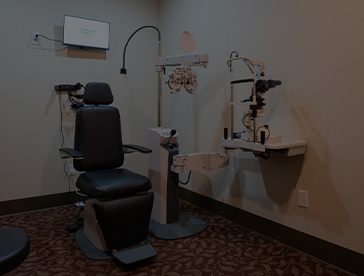Digital Eye Strain: Tips to Protect Your Eyes in the Digital Age

In today’s fast-paced, tech-driven world, screens are an unavoidable part of daily life. From work meetings and online schooling to social media scrolling and video streaming, many of us spend hours each day staring at digital devices. While convenient, prolonged screen time can take a toll on your eyes, leading to a condition known as digital eye strain.
What Is Digital Eye Strain?
Digital eye strain, also known as computer vision syndrome, refers to a group of eye and vision-related problems that result from prolonged use of digital devices. It’s especially common among those who spend two or more continuous hours using screens each day.
The eyes work harder to focus on screens than on printed materials. Several factors contribute to digital eye strain, including:
Poor lighting or screen glare
Improper viewing distances
Uncorrected vision problems
Poor posture while using digital devices
Reduced blinking while staring at screens
All these issues can lead to discomfort, particularly when screen use is extended without breaks.
Common Symptoms of Digital Eye Strain
If you’ve ever walked away from your computer or phone feeling tired or uncomfortable, you may have experienced digital eye strain.
Common symptoms include:
Eye fatigue or soreness
Blurred or double vision
Headaches
Dry or watery eyes
Neck and shoulder pain
Difficulty concentrating
These symptoms typically worsen with continued screen use and improve with rest.
Healthy Screen Time Habits to Protect Your Eyes
The good news is that there are practical ways to protect your eyes while still using your devices. Here are some healthy habits to reduce the effects of digital eye strain:
Follow the 20-20-20 Rule: Every 20 minutes, look at something 20 feet away for at least 20 seconds. This gives your eyes a break and reduces fatigue.
Adjust Lighting and Screen Brightness: Make sure your room lighting doesn’t create glare on your screen. You can also adjust screen brightness and contrast to a comfortable level.
Position Your Screen Properly: Keep your screen about an arm’s length away and the top of the screen at or just below eye level.
Use Blue Light Filters: Many devices have built-in blue light filters or night mode settings. These can reduce eye strain and may help improve sleep quality as well.
Take Regular Breaks: Get up, stretch, and rest your eyes regularly throughout the day to minimize fatigue.
When to See Your Eye Doctor
If you’re experiencing persistent symptoms of digital eye strain despite making adjustments to your habits, it may be time to see your eye doctor. You might need a new prescription, computer-specific glasses, or treatment for underlying issues like dry eye syndrome. Regular eye exams are crucial—especially for those who rely heavily on screens.
Schedule Your Comprehensive Eye Exam Today
As screens become more embedded in everyday life, it’s important to be proactive in protecting your vision. Digital eye strain is common, but it’s also preventable. By adopting healthy screen habits and scheduling routine eye exams, you can keep your eyes comfortable and your vision clear.
If you’ve noticed discomfort during screen time, schedule your comprehensive eye exam with Primary Focus Eye Center to manage digital eye strain and maintain optimal eye health. Visit our office in Yakima, Washington, or call (509) 401-8277 to book an appointment today.


